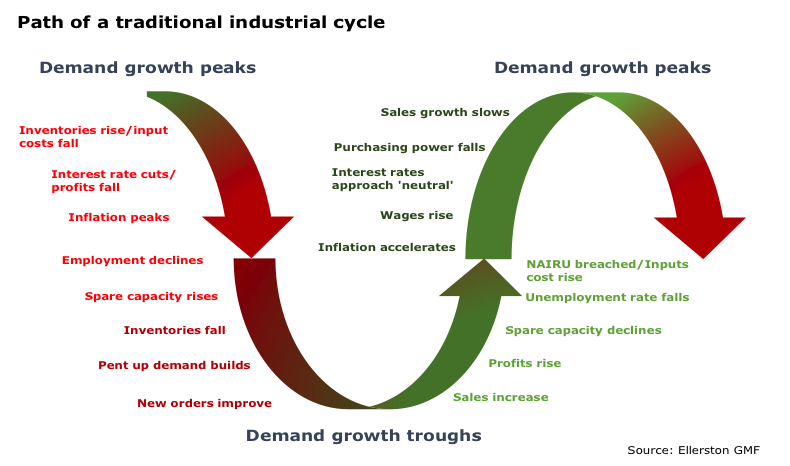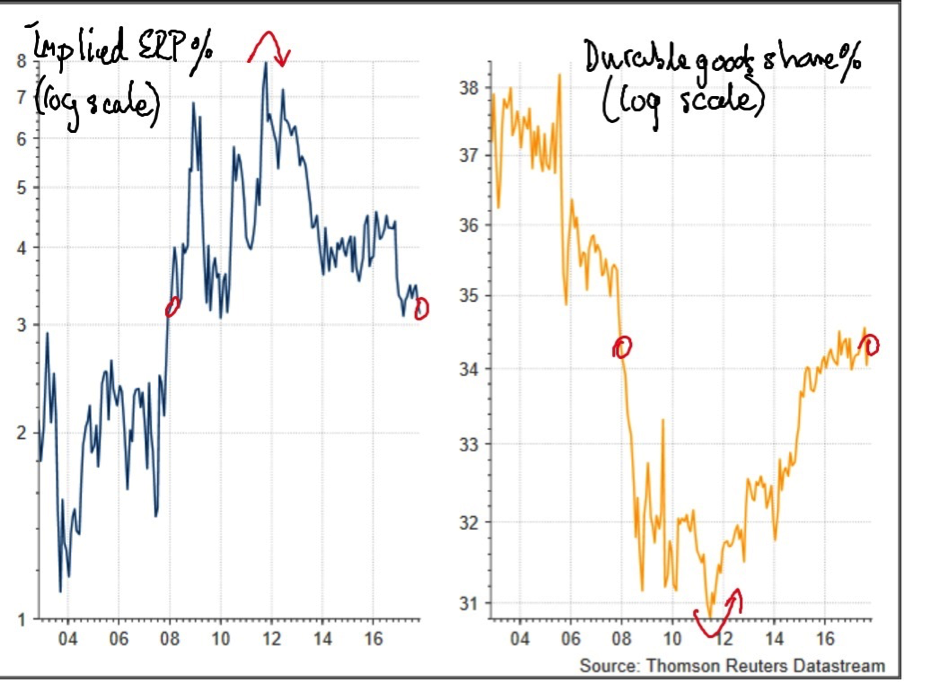Where are we in this bull market?
Sir John Templeton famously said; “bull markets are born on pessimism, grow on skepticism, peak on optimism and die on euphoria.” With the S&P 500 hitting new highs, and growth returning around the world, it’s natural to question how far along the path we are today.
It’s a confusing backdrop for investors. Unemployment is nearing ‘full employment’, inflation remains low, and a growing chorus of fund managers are bullish on markets and economies. However, the spectre of political uncertainty and secular stagnation are still fresh in most investors’ minds.
To get some clarity on these issues, we reached out to three leading economists to get their opinion on the current stage of the cycle. Responses are by Tim Toohey from Ellerston Capital, Nick Bishop from Aberdeen Standard Investments, and Sam Ferraro from Evidente.
A quantum leap in logic
Tim Toohey, Economist, Ellerston Capital
We believe there is a significant difference between the credit cycle and the business cycle. The evidence suggests that in most developed markets we are relatively late in the credit cycle yet in terms of the business cycle most countries are printing data consistent with being before the mid-point of the business cycle. The key exception being the US which has recently moved beyond the mid-point of the cycle.
It is important to remember that in the middle of 2016 financial markets and policy makers remained convinced that they were still stuck in either a debt deflation cycle, which was yet to end, or, worse still, had entered a period of secular stagnation that may never end. We believed that an upswing in a traditional global industrial cycle had commenced in 2Q16 based on several indicators;
- Excess credit indicators suggest the industrial sector would turn.
- Traditional early bell weather indicators such as semi-conductor sales and forward order surveys indicated that global demand had shifted course and;
- After several false starts for business confidence post crisis, finally global consumer confidence had started an ascent.
In short, a broad collection of data suggested that the secular stagnation thesis was wrong, and a global industrial cycle had commenced.
Trump’s election win, and his unfunded promises, provided the excuse for financial markets to embrace the economic reality. However, by early 2017 something very peculiar happened. Market participants who only months earlier had been convinced of secular stagnation then leapt to the conclusion if we are no longer in stagnation we must be late in an industrial economic cycle.
The argument ran that the US economy was in the 8th innings of a 9 innings stretch. This quantum leap in logic defied everything we know about the sequencing of events that occurs, with relatively predictable rhythm, through an industrial cycle.
The exhibit that we would nominate to understand where we are in the business cycle is not a single indicator, but rather a schematic of the various steps of a traditional industrial cycle, as shown below, and then pose the question where do the major countries now sit on this cycle?
By mid-2016 any reasonable assessment would have placed the US economy in the phase of the cycle that depicted diminishing spare capacity and falling unemployment. Currently, the Fed is still debating whether they have breached NAIRU, although most of the FOMC believe they currently have an unemployment rate that is now below the level consistent with stable inflation. In sequencing of the steps of the cycle all the other major developed and indeed the developing economies reside firmly behind the US.
In the absence of a very sharp rise in inflationary pressure, this is an economic cycle that could easily extend for a further couple of years before it reaches its peak.
Corporates well-insulated against short-term shocks
Nick Bishop, Head of Australian Fixed Income, Aberdeen Standard Investments
While many commentators have focused on the lengthy duration of the current business / credit cycle, we have not seen the large corporate capital expenditure which is typical of classic late-cycle behaviour.
This lack of capex is a corporate choice, as receptive debt markets have been no barrier for many years now. Corporates have instead massaged their capital structures through debt-funded share buybacks and special dividends. This reflects the broader low-growth backdrop as buybacks are an easier way to boost EPS than spending CAPEX. It also reflects investors’ desire for income at a time of very low bond yields.
Corporates have been able to extend their debt maturity profiles significantly at low interest rates, which means that they are better insulated against short-term shocks. These factors lower the risk of a near-term end to the current credit cycle, absent a large, unforeseen external shock.
However, we’d note that we are seeing clear signs of late-cycle investing taking place – credit spreads (risk premia) have fallen towards 2007 levels in certain markets. The compensation for owning low quality bonds compared to high quality bonds is very modest.
Investors and consumers in high spirits
Sam Ferraro, Director, Evidente
Multiple expansion has provided an important assist to upgrades in forecast profitability in accounting for the lift in US stock markets over the past five years. Evidente estimates that the implied equity risk premium (ERP) for the S&P 500 has dropped from a peak of 8% in 2012 to its current level of 3%, its lowest level in a decade (see left panel).
Investors clearly are assigning a lower discount rate to the future expected cash flows of S&P 500 companies, which has underpinned multiple expansion.
The revival of investors’ animal spirits primarily reflects improved psychology of the US consumer. The durable goods share of total goods consumption has lifted to a decade high of 34% after reaching a low point in late 2011, around the same time that the ERP peaked (see right panel). Evidente continues to monitor consumer spending on durable items as a key indicator of risk appetite in financial markets.
3 topics
1 contributor mentioned



